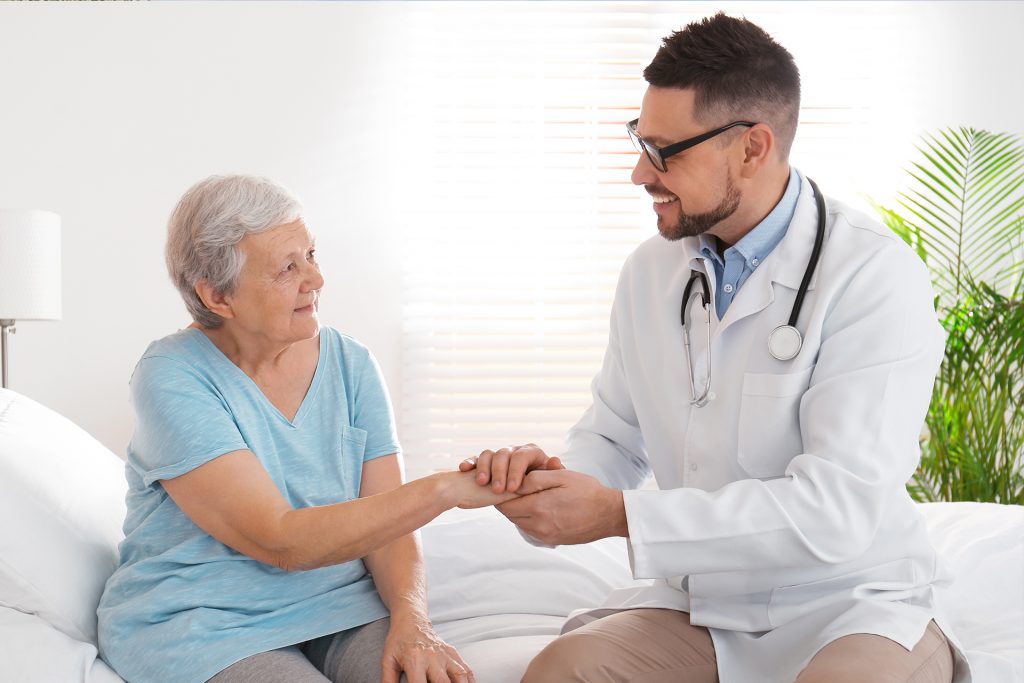Hormone therapy is the use of hormones in medical treatment. It may suppose testosterone, HGH, estrogen, or some other synthetic hormones.
The most general classes of hormone therapy are oncologic hormone therapy, hormone replacement therapy (for menopause), testosterone replacement therapy (TRT), and oral contraceptive pills transgender hormone therapy.
Types of hormone therapy used in our clinic:
- Hormone replacement therapy (or HRT)
- Testosterone replacement therapy
Hormone Replacement Therapy (or HRT)
Hormone Replacement Therapy (or HRT) is currently the most commonly used treatment for menopausal symptoms. As mentioned earlier, during menopause there is a decline of estrogen in a woman’s body which results in a hormone imbalance. This method of treatment aims to replace hormones to rebalance this. There are over 50 different types of HRT combinations. This means that there is a range of types (hormone type) and dosage levels which makes it more applicable to a large group of different individuals. If suitable for HRT, individuals will discuss the best combination for them with their practitioners.
Benefits of HRT for Women
The main benefit of HRT is that it can help relieve most of the menopausal symptoms, such as:
- hot flushes
- night sweats
- mood swings
- vaginal dryness
- reduced sex drive
Many of these symptoms pass after a few years, but they can be unpleasant, and taking HRT can offer relief for many women.
How to get started on HRT?
You can usually begin HRT as soon as you start experiencing menopausal symptoms and will not usually need to have any tests first.
Who can take HRT?
Most women can have HRT if they’re having symptoms associated with menopause.
When stopping HRT?
There’s no limit on how long you can take HRT. Most women stop taking it once their menopausal symptoms pass, which is usually after a few years.
Testosterone Replacement Therapy

Testosterone levels are known to decline as men age. The study on Aging reported the incidence of hypogonadism as 20% in men over 60 years of age, 30% in men over 70 years, and 50% in men over 80 years of age.
As men age, a decline in testicular production of testosterone is seen, as well as an increase in sex hormone-binding globulin, both of which act to decrease bioavailable testosterone. With this gradual decline, the beneficial effects of testosterone could be diminished and negatively affect physical and emotional well-being.
What is testosterone?
Testosterone is a hormone produced primarily in the testicles.
Testosterone helps maintain men’s:
- Bone density
- Fat distribution
- Muscle strength and mass
- Facial and body hair
- Red blood cell production
- Sex drive
- Sperm production
What happens to testosterone levels with age?
Testosterone levels generally peak during adolescence and early adulthood. As you age, your testosterone level gradually declines — typically about 1% a year after age 30 or 40. For older men, it’s important to determine if a low testosterone level is due to normal aging or if it is due to a disease (hypogonadism).
Hypogonadism hampers the ability to produce normal amounts of testosterone due to a problem with the testicles or with the pituitary gland that controls the testicles. Testosterone replacement therapy, in the form of injections, pellets, patches, or gels, can improve the signs and symptoms of low testosterone in these men.
Testosterone replacement therapy (TRT) is a reasonable treatment option often discussed for men with low testosterone levels and symptoms of hypogonadism. When replaced, many of the positive effects of testosterone are regained. These positive results have led to a drastic increase in the use of testosterone replacement for men with symptomatic hypogonadism.
Testosterone replacement therapy (TRT) is a widely used treatment for men with symptomatic hypogonadism.
The benefits for men seen with TRT are:
- increased libido and energy level,
- beneficial effects on bone density, strength, and muscle
- as cardioprotective effects
- inducing hematopoiesis
To learn more from a qualified expert, apply for a free consultation here.

